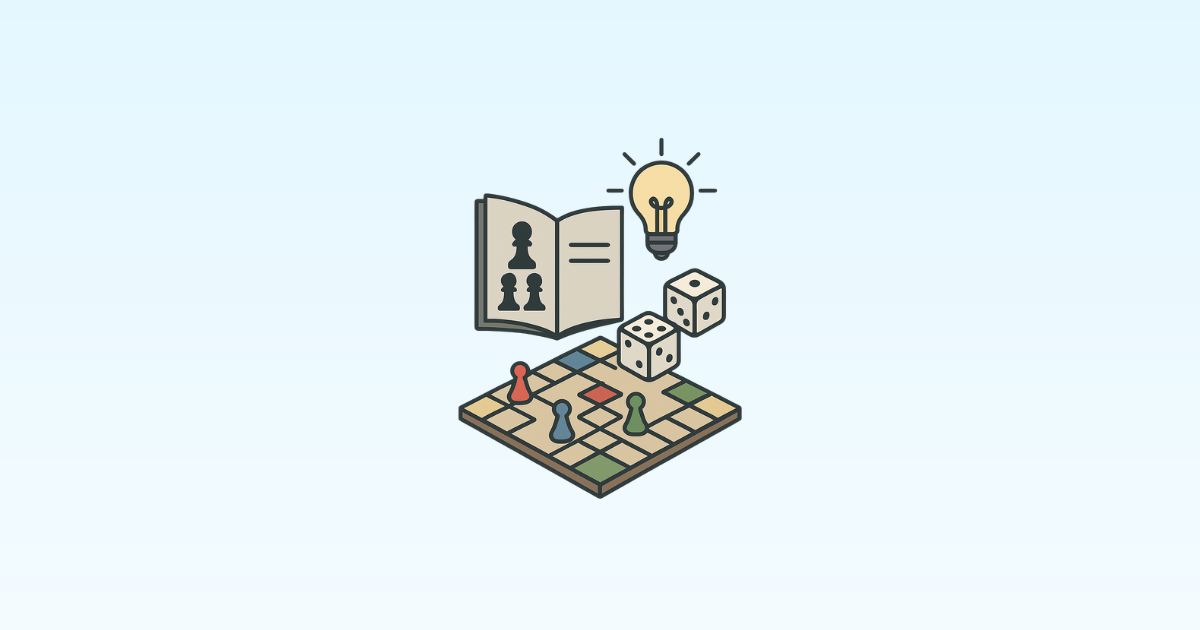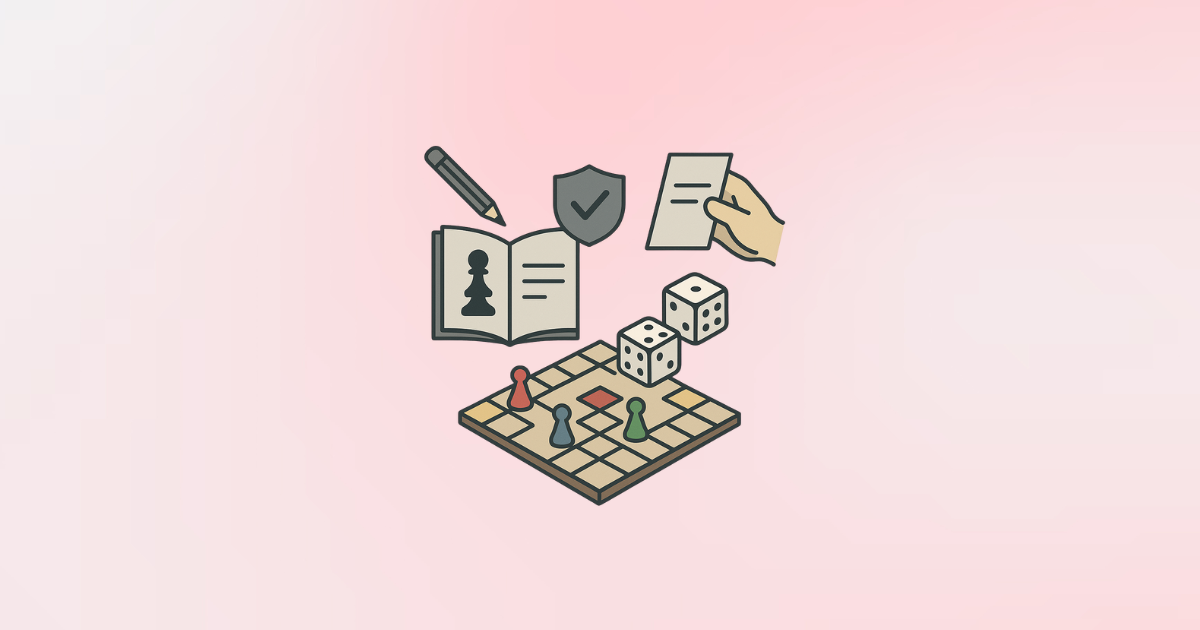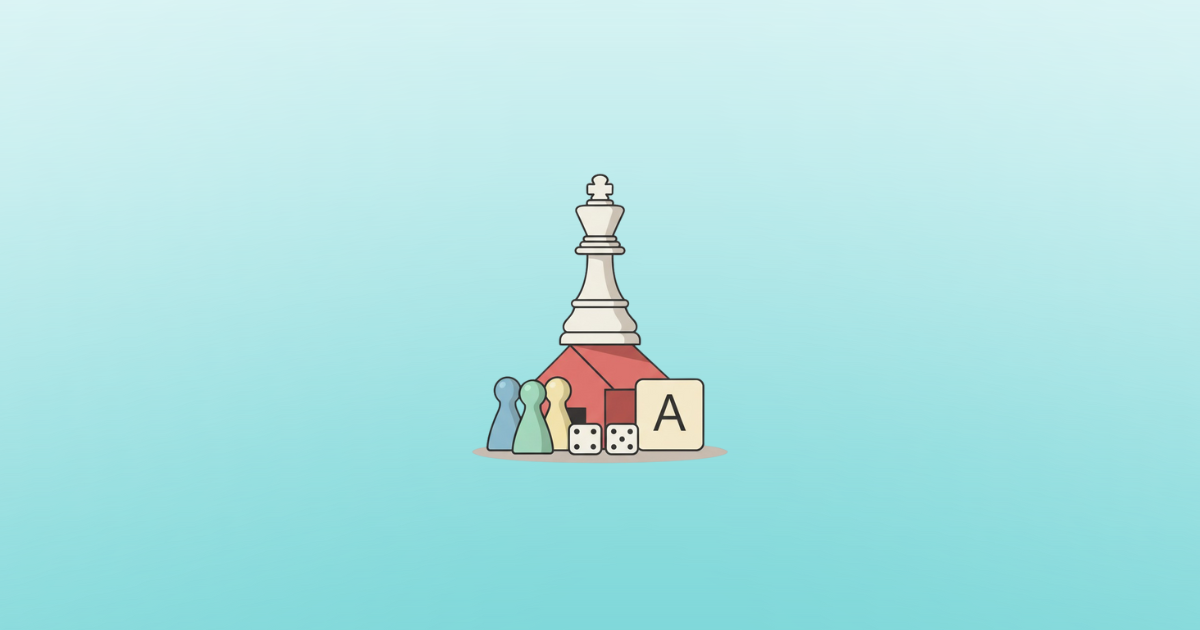Have you ever played a board game and thought, "I could make something better"? 🤔 Or maybe you have a brilliant game idea that keeps you up at night? 💡 You're not alone. Thousands of people dream of creating their own board game, but many don't know where to start.
This complete guide will walk you through every step of board game development. From your first spark of inspiration to holding your finished game in your hands, we'll cover everything you need to know to turn your idea into reality. ✨
🎮 What Is Board Game Development?
Board game development is the process of creating a tabletop game from concept to production. It involves designing game mechanics, creating artwork, testing gameplay, and bringing your game to market. While it might seem overwhelming at first, breaking it down into manageable steps makes the process much easier.
The board game industry has exploded in recent years. 📈 More people are playing board games than ever before, creating exciting opportunities for new designers. Whether you want to create a simple family game or a complex strategy game, there's room for your unique vision. 🌟
💡 Step 1: Idea Generation - Where Great Games Begin
Every successful board game journey starts with a single spark of inspiration. This first step is all about exploring your creativity, understanding your potential players, and researching the market to ensure your idea has potential. Don't rush this phase - a strong foundation will save you countless hours later in development.
🔍 Finding Your Game Concept
Every successful board game starts with a strong idea. But where do great ideas come from? Here are some proven methods to spark your creativity:
Draw from Your Interests: Think about your hobbies, favorite books, movies, or historical periods. What excites you? 🤩 Games are more engaging when the designer is passionate about the theme.
Identify Problems to Solve: Look at existing games and ask yourself what could be improved. 🔧 Maybe games in your favorite genre take too long to play, or they're too complicated for casual players.
Combine Existing Elements: Some of the best games combine familiar mechanics in new ways. 🔗 What happens when you mix deck-building with area control? Or combine cooperative gameplay with hidden roles?
🎯 Defining Your Target Audience
Before you design a single rule, you need to know who will play your game. Your target audience affects every design decision you'll make:
- Family Games: Simple rules, short play time, ages 8+
- Strategy Games: Complex decisions, longer play time, experienced gamers
- Party Games: Easy to learn, social interaction, large groups
- Casual Games: Medium complexity, broad appeal, 30-60 minutes
Understanding your audience helps you make the right choices about complexity, theme, and components.
📊 Researching the Market
Before diving into design, research what's already out there. Visit your local game store, browse BoardGameGeek, and play games similar to your idea. This research helps you:
- Understand what players expect from games in your genre
- Identify gaps in the market your game could fill
- Learn from successful games without copying them
- Avoid reinventing mechanics that already exist
🛠️ Step 2: Designing and Developing Your Game
Now comes the exciting part - turning your idea into something you can actually play! This step involves creating rough prototypes, testing them extensively, and refining your game through multiple iterations. Remember, your first version won't be perfect, and that's completely normal. The key is to start simple and improve based on real player feedback.
🧩 Creating Your First Prototype
A prototype is a rough version of your game used for testing. Don't worry about making it pretty - focus on functionality. Here's what you need:
Basic Materials: Use index cards, poker chips, dice, and simple boards drawn on paper. The goal is to test your ideas quickly and cheaply.
Core Mechanics: Start with the most important parts of your game. If it's a card game, focus on the cards. If it's about moving pieces, create a simple board.
Simple Rules: Write basic rules that cover the essential gameplay. Don't worry about edge cases yet - focus on the main game flow.
🎭 The Art of Playtesting
Playtesting is where your game comes to life. It's also where you'll discover what works and what doesn't. Here's how to do it effectively:
Start with Friends and Family: They'll be honest but supportive. Watch how they play more than what they say.
Find Diverse Testers: Different types of players will reveal different problems. Test with both experienced gamers and newcomers.
Take Notes: Write down everything - confusing rules, boring moments, unexpected strategies. These notes are gold.
Ask the Right Questions:
- What was your favorite part?
- What was confusing?
- Would you play this again?
- How long did it feel like the game took?
🔄 Iterating and Improving
Based on playtesting feedback, you'll need to make changes. This is normal and expected. Every great game goes through dozens of versions before it's ready. Common areas for improvement include:
Balance: Make sure no strategy is overpowered and all players have a fair chance to win.
Pacing: Games should build tension and excitement, not drag or feel rushed.
Clarity: Rules should be easy to understand and remember.
Fun Factor: If players aren't enjoying themselves, something needs to change.
📢 Step 3: Marketing and Promotion - Building Your Audience
Many designers make the mistake of waiting until their game is finished to start marketing. The truth is, building an audience should begin early in your development process. This step focuses on creating genuine connections with potential players, fellow designers, and the broader gaming community. Authentic engagement beats flashy advertising every time.
🌐 Building an Online Presence
Marketing should start long before your game is ready. Building an audience takes time, so start early:
Create a Website or Blog: Share your development journey. People love behind-the-scenes content and watching games evolve.
Use Social Media: Instagram is great for showing artwork and components. Twitter works well for connecting with other designers and gamers.
Join Gaming Communities: Participate in BoardGameGeek forums, Reddit communities, and Facebook groups. Be helpful and genuine, not just promotional.
🤝 Engaging with the Board Game Community
The board game community is welcoming and supportive. Here's how to become part of it:
Attend Conventions: Events like Gen Con, Origins, and local conventions are perfect for networking and showing your game.
Connect with Other Designers: Many designers are happy to share advice and experiences. Join designer groups and attend meetups.
Work with Reviewers: Board game reviewers and YouTubers can help spread the word about your game. Build relationships before you need them.
🚀 Creating Buzz for Your Game
Generate excitement for your game through:
Development Updates: Share progress photos, rule changes, and playtesting stories.
Preview Content: Release artwork, rule excerpts, or gameplay videos to build anticipation.
Interactive Content: Ask your audience to vote on artwork options or suggest theme ideas.
💪 Step 4: Recovering from Failure - Learning and Growing
Not every game will be a hit, and that's perfectly okay. Even the most successful designers have projects that don't work out as planned. What separates successful designers from those who give up is how they handle setbacks. This step is about building resilience, learning from mistakes, and using failures as stepping stones to future success.
📚 Learning from Mistakes
When a game doesn't work, ask yourself:
- Was the core idea flawed?
- Did I rush the design process?
- Was the market not ready for this type of game?
- Could better playtesting have caught these issues?
🔥 Staying Motivated
Game design is challenging, and rejection is part of the process. Keep these tips in mind:
- Remember that every "failed" game teaches you something valuable
- Connect with other designers who understand the challenges
- Celebrate small victories along the way
- Keep designing - your next game might be the one that succeeds
⚡ Applying Lessons Learned
Use each experience to improve:
- Keep detailed notes about what worked and what didn't
- Develop better playtesting methods
- Build stronger relationships in the gaming community
- Refine your design process
💰 Step 5: Running a Kickstarter Campaign
Kickstarter has become the go-to platform for board game funding, but success isn't guaranteed. A well-run campaign can fund your game and build a community of passionate supporters. However, it requires months of preparation, constant communication, and careful execution. This step covers everything you need to know to run a successful crowdfunding campaign.
📋 Pre-Campaign Preparation
Before launching, you need:
A Polished Game: Your game should be 95% complete. Kickstarter is for funding production, not development.
Professional Artwork: High-quality visuals are essential for campaign success.
Manufacturing Quotes: Know exactly how much production will cost.
Built-in Audience: Start building your email list months before launching.
🎯 Setting Realistic Goals
Your funding goal should cover:
- Manufacturing costs
- Shipping expenses
- Kickstarter fees (8-10%)
- Marketing costs
- Contingency fund (10-20%)
Many campaigns fail because they set unrealistic goals. It's better to fund at a lower amount and add stretch goals.
✨ Creating a Compelling Campaign
Your campaign page should include:
Clear Game Description: Explain what your game is about in simple terms.
High-Quality Images: Show the game components, board, and cards clearly.
Gameplay Video: A 3-5 minute video showing how the game plays.
Designer Story: People back creators they connect with personally.
Detailed Timeline: Show when backers can expect to receive their games.
📈 Managing Your Campaign
Once live, your campaign needs constant attention:
Daily Updates: Keep backers engaged with regular updates.
Quick Responses: Answer questions and comments promptly.
Stretch Goals: Add exciting extras as funding increases.
Community Building: Foster discussion among backers.
🚀 Beyond Launch: Building Long-Term Success
📦 Post-Campaign Fulfillment
After your campaign ends, the real work begins:
Manufacturing Management: Stay in close contact with your manufacturer.
Quality Control: Test samples thoroughly before approving full production.
Shipping Coordination: Plan fulfillment carefully to avoid delays.
Backer Communication: Keep supporters informed throughout the process.
🏆 Building on Success
A successful game can lead to bigger opportunities:
Expansions: Add new content to keep players engaged.
Publisher Relationships: Success can attract publisher interest for future games.
Convention Presence: Attend more events to grow your reputation.
Community Building: Maintain relationships with your player base.
🛠️ Essential Tools for Board Game Designers
🎨 Design Tools
- Tabletop Simulator: Test your game digitally with remote players
- Component Studio: Create professional-looking prototypes
- Card Creators: Tools like Cardmaker or Print & Play Games
- Rulebook Software: Programs like Rulebook.gg for creating professional rulebooks
💼 Business Tools
- Project Management: Trello or Asana for tracking progress
- Financial Planning: Spreadsheets for budgeting and cost tracking
- Communication: Discord or Slack for community building
- Analytics: Google Analytics for website tracking
⚠️ Common Mistakes to Avoid
🎲 Design Mistakes
- Over-complicating Rules: Simple is usually better
- Insufficient Playtesting: Test more than you think you need
- Ignoring Feedback: Listen to your playtesters
- Copying Existing Games: Create something unique
💸 Business Mistakes
- Underestimating Costs: Always budget more than you think you need
- Poor Communication: Keep backers and partners informed
- Rushing to Market: Take time to get it right
- Neglecting Marketing: Start promoting early and consistently
🎉 Conclusion: Your Game Design Journey Starts Now
Creating a board game is one of the most rewarding creative endeavors you can undertake. Yes, it's challenging. Yes, it takes time. ⏰ But when you see people having fun with something you created, all the hard work becomes worth it. 😊
Remember these key points as you start your journey:
- Start simple and iterate based on feedback
- Build your audience early and authentically
- Learn from every setback and keep improving
- Focus on creating genuinely fun experiences
- Be patient - great games take time to develop
The board game industry welcomes new voices and fresh ideas. 🎵 Whether you're designing your first family game or dreaming of the next big strategy hit, there's room for your vision.
Ready to start designing? 🚀 Begin with a simple idea, gather some basic materials, and create your first prototype today. The board game world is waiting to see what you'll create! 🌟
Looking for tools to help with your board game development? 🔧 Rulebook.gg can help you create professional, clear rulebooks that make your game easy to learn and fun to play. 📖




